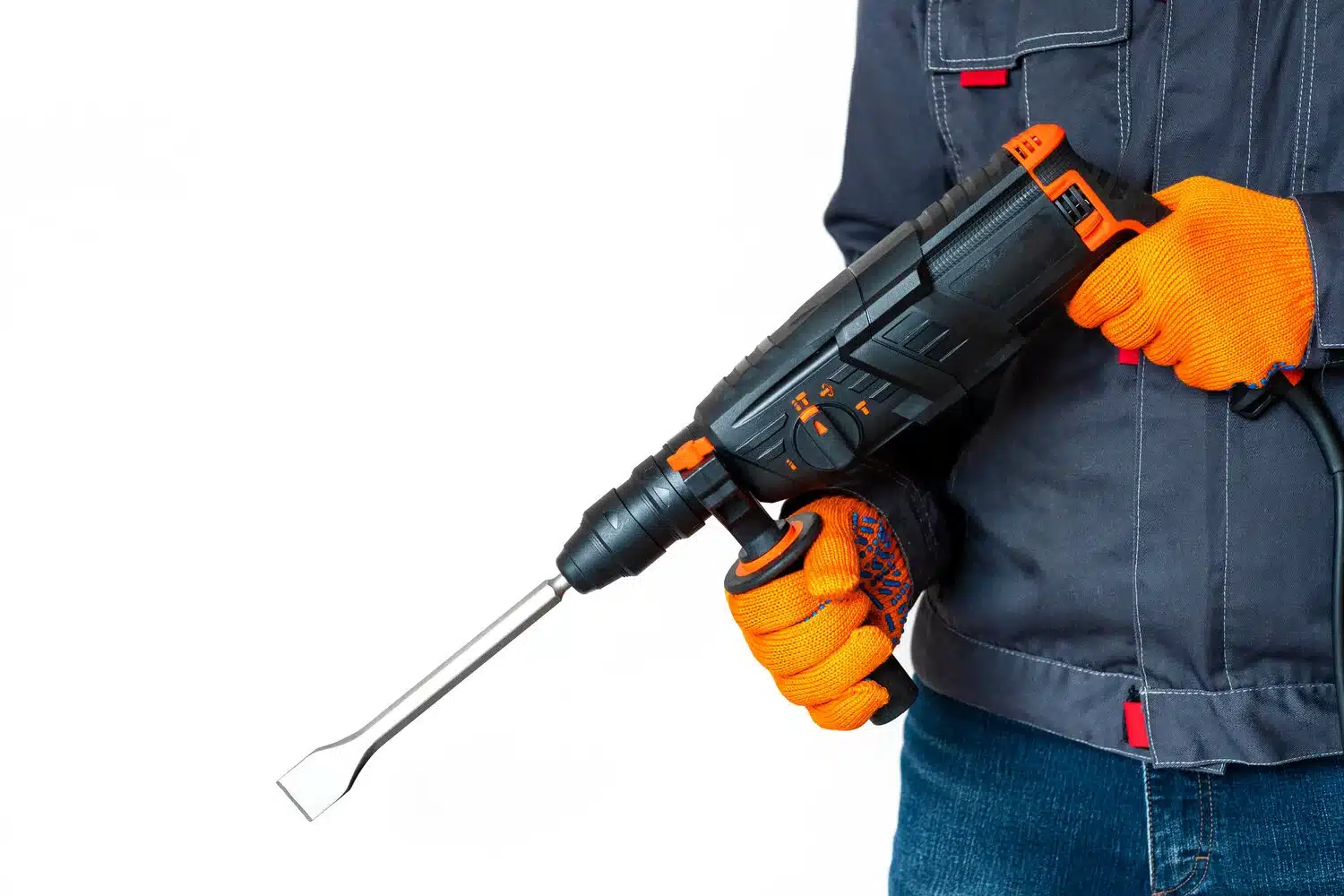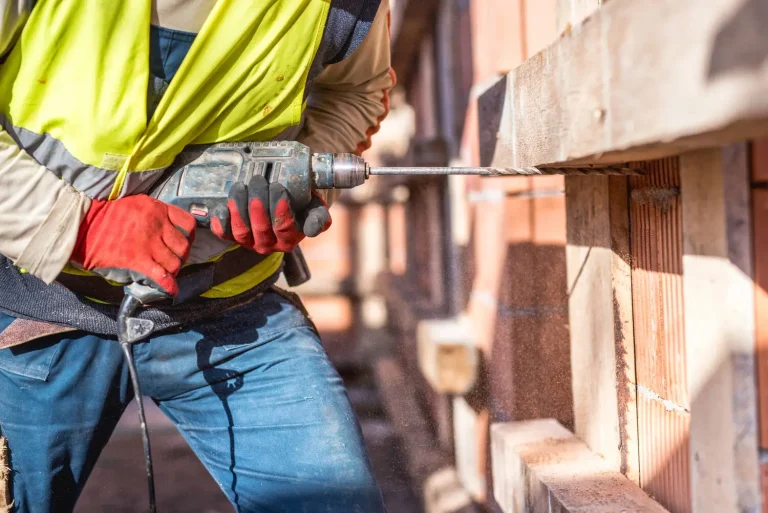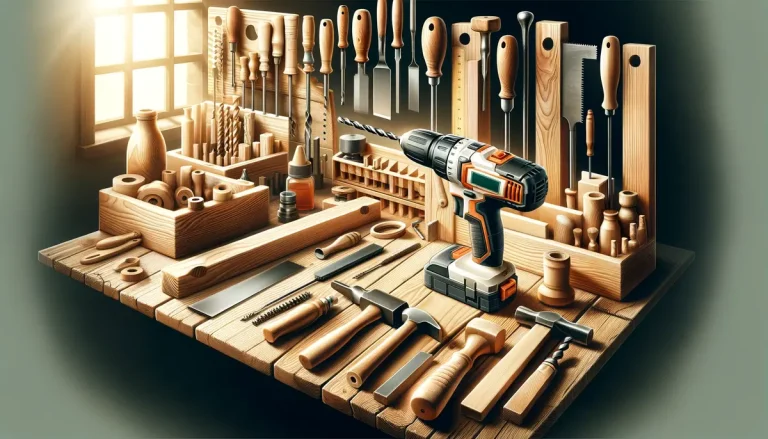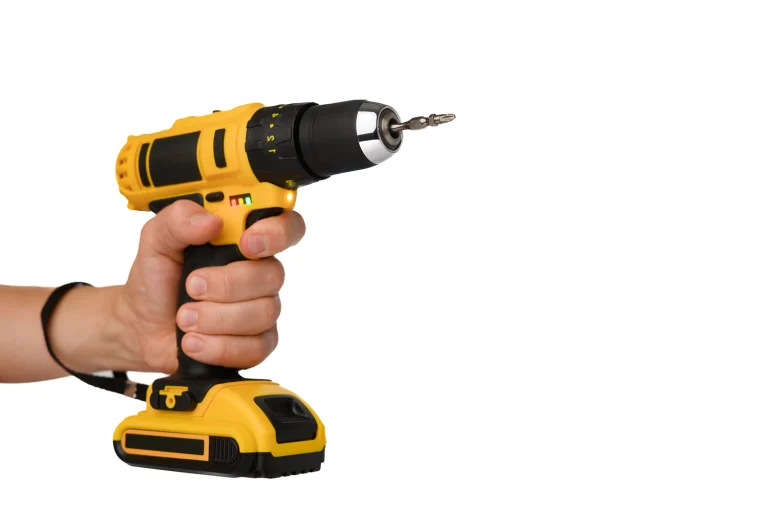Lightweight Hammer Drills: Big Power in a Compact Design
Choosing a lightweight hammer drill can make your DIY projects easier and more efficient. Lightweight hammer drills are powerful enough to work on tough materials, but they’re not as heavy as other drills, which means you won’t get as tired and can work more accurately.
Before you decide to get one, it’s important to think about how a lighter drill could really help you at home. Let’s dive into the advantages and a few drawbacks to consider if you’re thinking about a lightweight drill for your work.
First, these drills are easier to hold and use, especially if you’re working in tight spaces or for a long time. Their compact size means you can easily store them without taking up much space. However, it’s essential to make sure that the drill you choose has the power you need for your tasks.
Understanding Lightweight Hammer Drills
Lightweight hammer drills are great for anyone who likes to do their own home projects. They’re powerful but not heavy, so they won’t make you tired as quickly. I really like that they’re designed to be comfortable to hold, which means I can work more accurately for longer periods.
Another great thing is that many of these drills don’t have cords. This means I can move around freely without being stuck close to an outlet. They also have settings that let you change the speed and even reverse the direction, which is super helpful for working with different materials like wood, metal, or concrete. When I’m using one of these drills, I know I can count on it to be powerful enough for the job without sacrificing quality.
For example, when I’d to put up some shelves, my cordless hammer drill made it easy to drill into the concrete walls without a fuss. A good choice for a drill like this is the DeWalt DCD778L1. It’s a model that’s well-liked for its balance of power and lightweight design.
Identifying Your DIY Needs
When choosing tools for home improvement projects, it’s important to pick the right one. A light hammer drill is great for many tasks, but it’s especially useful when you need to drill into hard materials like concrete or brick. A heavy drill might make you tired and slow you down.
So, when I work on those tough drilling tasks, I use a hammer drill. It’s powerful and gets the job done without wearing me out. Remember, it’s not just about the drill’s power; its weight matters too.
For example, when I’m working on a project for a long time, I prefer a drill that’s easy to hold. This way, I can work more efficiently and finish my projects faster. It’s like using the right ingredients in a recipe; the right tool makes all the difference.
Lightweight Drill Features
The hammer drill’s slim design makes it easy to handle, especially in small spaces or when working above your head. Its comfortable grip helps prevent my hands from getting tired, so I can keep working longer.
Despite being light, this drill is still powerful enough for most DIY tasks because it uses a high-efficiency, brushless motor. I also like the adjustable speed trigger, which lets me change the drilling speed to match the material I’m working with.
The built-in LED lights are great for seeing what I’m doing when it’s not very bright. Plus, the drill has a keyless chuck that makes changing bits quick and easy, helping me work more efficiently.
Drill Functionality and Performance
How does this hammer drill’s performance hold up against the demands of various DIY projects? I find its blend of power and design manages to meet most of my needs comfortably. Here’s a breakdown:
Power and Speed
- Variable Speed Control: Tailors the RPM to the task at hand.
- Torque Settings: Adjusts to prevent overdriving screws.
Functionality
- Hammer Action: Efficiently drills into masonry.
- Drill and Driver Capabilities: Versatile for multiple tasks.
Battery Life
- Lithium-Ion Technology: Offers longer run times.
- Power Conservation: Smart features to extend battery life.
The drill’s lightweight nature doesn’t compromise its performance; it strikes a balance that gives me the freedom to tackle projects without the strain of heavier models.
Safety Measures and Usage
While the drill’s performance and lightweight design enhance its appeal for DIY projects, it’s crucial to prioritize safety measures and understand proper usage to prevent accidents and ensure longevity of the tool.
I always ensure I’m wearing protective gear, like safety glasses and gloves, to shield myself from potential flying debris. It’s also vital to inspect the drill before use, checking for damaged cords or faulty parts. I keep my workspace tidy and free of obstructions to avoid any mishaps.
When operating the hammer drill, I maintain a firm grip and stance to control the tool’s power effectively. Moreover, I’m careful not to overload the drill, as forcing it can cause damage or pose a safety risk.
Frequently Asked Questions
How Does the Maintenance of a Lightweight Hammer Drill Differ From That of a Heavier Model?
Maintaining a smaller hammer drill is often easier than taking care of a bigger one. This is because a lightweight drill usually has fewer parts to clean, which makes the process quicker and less complex. When you’re working on upkeep, the smaller size and weight make it easier to manage. On the other hand, larger hammer drills are more demanding. They often have more components and their size can make them harder to handle, meaning you’ll likely spend more time and energy on maintenance.
For example, with a lightweight hammer drill like the Bosch PSB 1800 LI-2, you’ll find it straightforward to check and replace the carbon brushes or clean the air vents. In contrast, with a heavier drill such as the DeWalt DCD996, you might need to put in more work to perform similar tasks due to its larger structure and weight.
When you’re looking after your tools, remember that a lightweight hammer drill not only saves you effort during use but also when it’s time to clean and maintain it. It’s a practical choice for both ease of use and simple maintenance.
Can Lightweight Hammer Drills Be Used for Professional Construction Projects, or Are They Strictly for DIY Use?
Lightweight hammer drills are capable of handling professional construction work, but they don’t match the durability of the more heavy-duty models. Their lighter weight makes them a good choice for jobs where you need to move around a lot or work for extended periods without getting tired. For example, if you’re working on a project that requires you to climb ladders or work in tight spaces, a lightweight drill will be much easier to handle than a bulkier one. It’s worth mentioning that for really tough jobs that require a lot of power, a heavier drill might be the better choice. For everyday construction tasks, however, a lightweight hammer drill is quite adequate and can provide the convenience and comfort needed on the job site.
What Are the Environmental Impacts of Using a Lightweight Hammer Drill Compared to Traditional Models?
I’ve switched to a lightweight hammer drill because it uses less energy to make and run, which means I’m helping the planet by reducing my carbon emissions. This type of drill is not only better for the environment but also lets me do my DIY projects in a way that’s more mindful of our natural resources. By using a tool that’s easier on the environment, I’m making a small but meaningful difference. For example, when I work on building a bookshelf, I’m using less electricity and producing fewer emissions compared to using a heavier, traditional drill. Plus, it’s easier to handle, making my work quicker and more precise. If you’re looking to make a similar change, I’d recommend looking into brands that focus on eco-friendly tools.
How Do I Dispose of or Recycle a Lightweight Hammer Drill Once It Reaches the End of Its Lifespan?
I plan to find a local electronic waste program to recycle my old hammer drill. This is important because it helps protect the environment by following the proper disposal guidelines for electronics. By doing this, I am taking an active role in ensuring that my DIY tools are disposed of in a responsible way. It’s not just about getting rid of a tool; it’s about making sure it doesn’t harm the environment. For example, if you’re in the same situation, you could check with your city’s waste management department for a recycling program or look for a hardware store that offers tool recycling. This way, we can all do our part in reducing waste and preserving our planet.
Are There Specific Brands That Are Known for Producing the Most Durable Lightweight Hammer Drills?
Bosch, DeWalt, and Makita are well-known for making hammer drills that are not only light but also strong and reliable. These drills last a long time, which means you can trust them for various projects. For example, a Bosch hammer drill might be a great tool if you’re planning to do a lot of drilling into concrete or masonry. It’s designed to handle tough jobs without wearing out quickly. DeWalt hammer drills are also a good choice because they’re built to withstand heavy use, making them perfect for people who do a lot of DIY projects or professional construction work. Makita offers hammer drills that are easy to handle and maintain their power over time, which is great if you need a drill that won’t slow you down as you move from task to task. By choosing one of these brands, you’re picking a tool that’s made to last and help you work efficiently.







